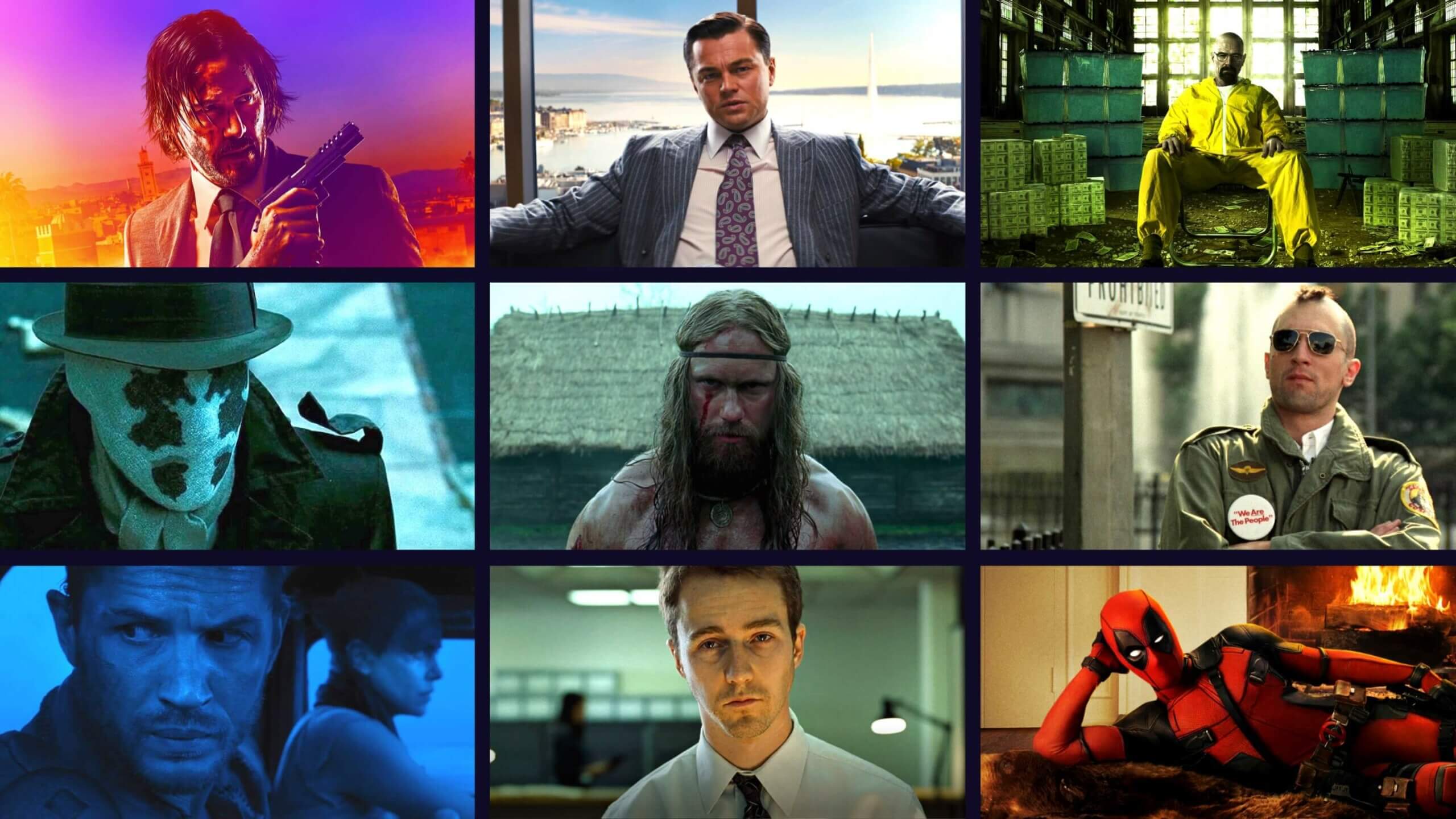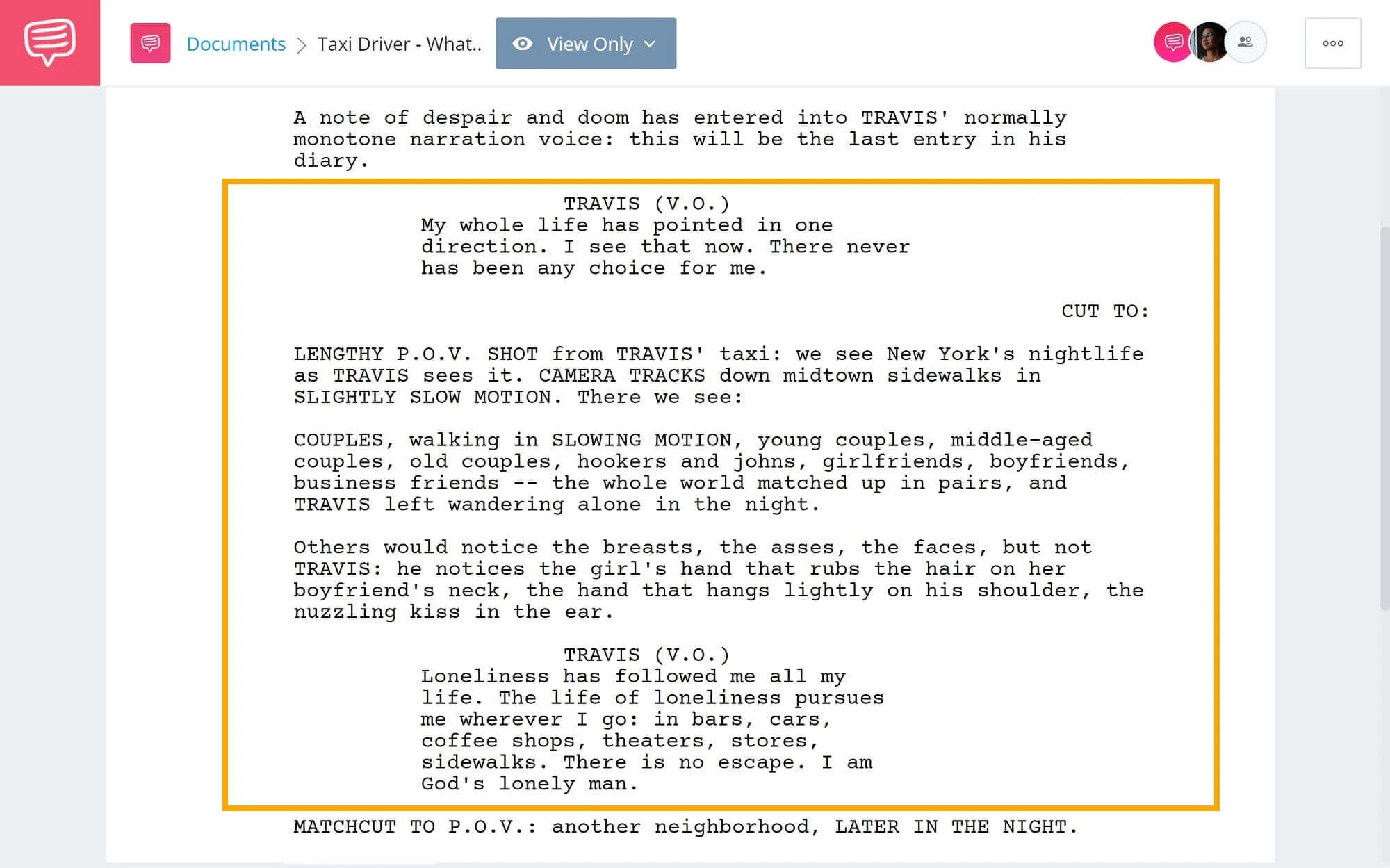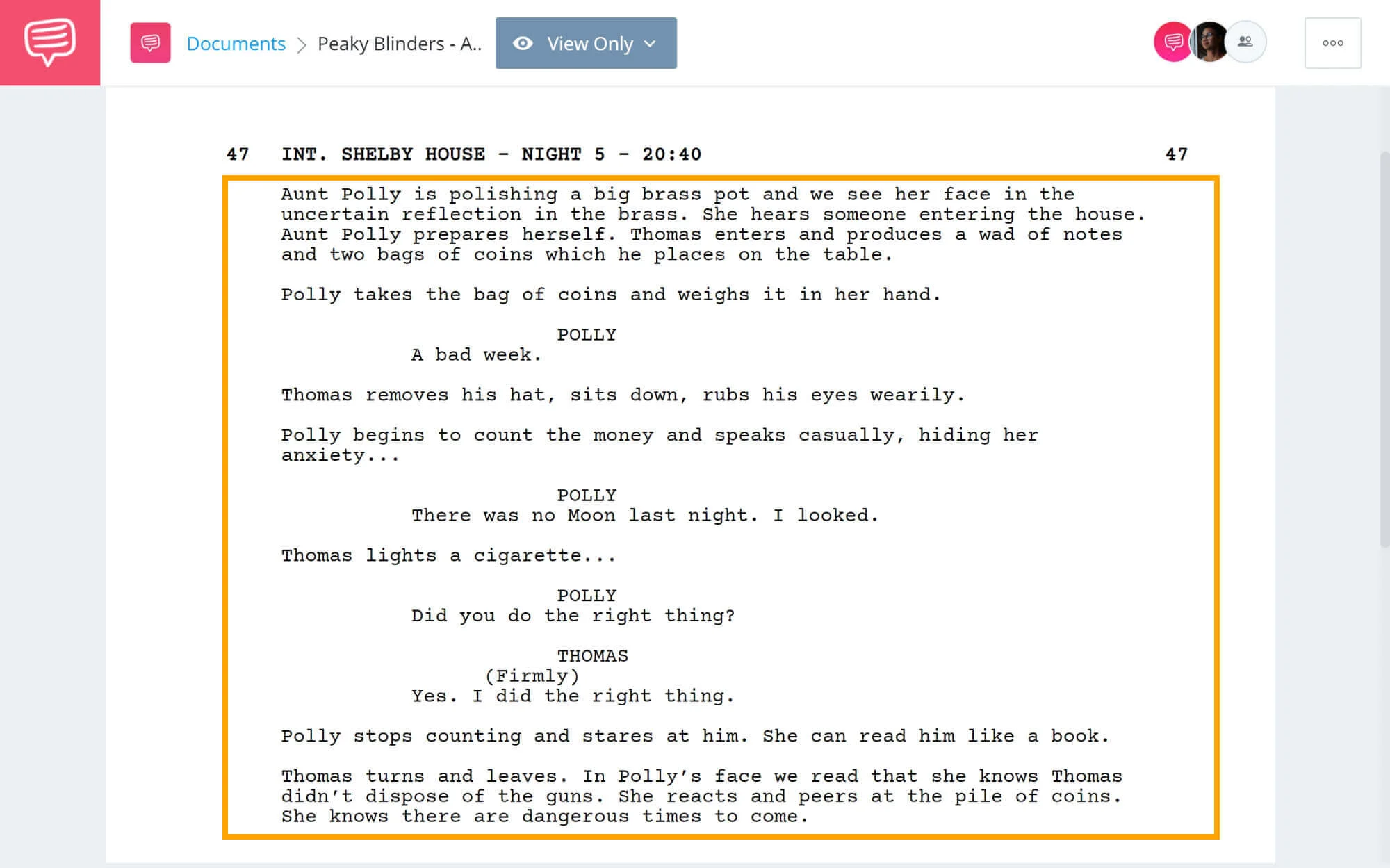What is an anti hero? We’ve all heard that characters like Walter White and Thomas Shelby are anti heroes, but we don’t hear why. Perhaps the better question is: what are the anti hero characteristics define them? We’re going to explore that question by looking at some anti hero examples from literature, film, and television. But before we jump into our anti hero definition, let’s review the history of the term.
Anti Hero Characters
First, let's define anti hero
Anti heroes have been used in stories for over four thousand years. Many of the most acclaimed writers from around the world have used them as their protagonists, such as William Shakespeare, Fyodor Dostoevsky, and Franz Kafka. Now that we’ve touched on the term’s roots, let’s define anti hero.
ANTI HERO DEFINITION
What is an anti hero?
An anti hero is a narrative protagonist who lacks the qualities of a conventional hero. They may lack the strong morals, courage, or selflessness that we associate with heroes. Anti heroes often feel rejected by society, and veer down a self-destructive path that results in isolation or death. Over the years, anti hero characters have become one of the most popular types of story protagonists — in television (Don Draper, Tony Soprano) and in film (Michael Corleone, Daniel Plainview).
Anti Hero (Anti Protagonist) Characteristics:
- Serves as a Protagonist of a story
- At odds with society
- Motivated by self-interest
- Actions or morals are noble
- Uses his charisma to influence other people
Anti Hero Meaning is Rooted in the Classics
Anti hero examples in literature
The history of the anti hero can be traced all the way back to the 2nd millennium B.C. with the Epic of Gilgamesh.
“After another moment's silence she mumbled that I was peculiar, that that was probably why she loved me but that one day I might disgust her for the very same reason.”
— Albert Camus, from The Stranger.
For Camus’ protagonist Meursault, there is no heaven, no love, no acceptance. The inability to find commonalities with others, or salvation within themselves, is something that most anti hero characters struggle with. No matter what they do, they’re destined to be rejected by society. This outsider mentality is something that’s come to define anti hero.
Here are some more anti heroes in literature:
- Holden Caulfield in Catcher in the Rye
- Humbert Humbert in Lolita
- Heathcliff in Wuthering Heights
- Patrick Bateman in American Psycho
- Raskolnikov in Crime and Punishment
- Jay Gatsby in The Great Gatsby
Anti Hero Movies
Anti hero examples in film
Perhaps the best film example of the Reject anti hero is Travis Bickle in
Taxi Driver. Not only is Taxi Driver one of Martin Scorsese’s best movies, it’s a masterful story of an anti hero at odds with a decaying society.
Despite his off-putting anti hero characteristics, Travis strives to be a hero. He does this in three ways, all of which are noble, but are perverted to the point of criminality:
- Liberate women from oppression
- Rid the world of ‘filth’
- Die a martyr
Travis keeps his worldview under wraps, because he knows deep down that he’ll be rejected for it. Instead, the insatiable inner conflict brewing within him comes across as peculiar to others or even alluring, albeit for a short time.
Bickle does everything possible to make himself more masculine in an attempt to gain control of everything that eludes him. He wishes that he was more attractive, more powerful, more important — but he can’t be. There’s nothing he can do to become accepted. He has been, and will always be, God’s lonely man.
We imported the Taxi Driver script into StudioBinder’s screenwriting software to see how Schrader implies Travis’ breaking point. Pay special attention to the scene actions and shot suggestions. This script would serve as the blueprint for one of the all-time best anti hero movies.
What is an Anti-Hero — Travis Bickle • Read Full Scene
Through screenwriting techniques, Schrader slows down the moment for us. Here, Travis accepts the fate he’s destined to. This leads him further and further into the rabbit-hole of isolation, and eventually results in a complete departure from reality.
Remember: without Paul Schrader’s expert anti hero work in the screenplay, none of this would have been possible– we wouldn’t even have one of the most iconic scenes of all time.
Here are a few more anti-heroes from movies and TV shows:
- Walter White in Breaking Bad
- Tony Soprano in The Sopranos
- Frank Underwood in House of Cards
- Dexter Morgan in Dexter
- Don Draper in Mad Men
- Jack Sparrow in Pirates of the Caribbean
- Michael Corleone in The Godfather
- V in V for Vendetta
- Jax Teller in Sons of Anarchy
Related Posts
What’s an Anti Hero with Morals?
Anti hero vs Villain
Society is corrupt. People are wrongfully persecuted and oppressed all the time — for the color of their skin, their gender, their sexual orientation, their wealth status, their age, etc. We all know this is true, but what happens when a story makes its protagonists strike back against the status quo?
Then that protagonist is likely a moralistic anti hero.
Change doesn’t come easy — and it often requires sensational action. Take Walter White from Breaking Bad for example. Walt starts out as a pretty normal guy. He has a family, a home, a stable job — but one day, he’s diagnosed with cancer and has little means to procure treatment for himself. In Breaking Bad, you could argue that the pursuit of financial power is the major dramatic theme of the series.
Just like the Reject anti hero, the Moralistic anti hero is destined for isolation. Their pursuit of acceptance, power, and control consume them to the point of doom — the major difference between the two is how they became anti heroes.
It’s easier for us to empathize with a character who is the victim of corruption or oppression. With Walt, it was a lack of control and power, exposed by his cancer diagnosis. This system pushed him into abandoning his morals. Remember, Walt starts the series as a man disgusted by violence, power, and wealth.
Types of Anti heroes
Anti Hero vs. Anti Villain
We’ve established the differences in anti hero vs villain, now let’s look at what distinguishes an anti hero from an anti villain. We know– there’s a lot of terminology being thrown around, but bear with us.
First, let’s define an anti villain. Somewhat counterintuitively, an anti villain is still a villain; it’s their motives which set them apart. Whereas a villain is usually wicked through and through, an anti villain’s motives are actually virtuous.
Take Magneto from the X-Men comics, for example. He has seen discrimination as a mutant, and sees Homo Sapiens as dangerous to his kind.
This makes him sympathetic. But what makes him a villain is that he wants to fight violence with violence, destroying the human race before, in his eyes, they destroy mutants.
These contradictions make Magneto a much more interesting villain. His complicated backstory lets the audience understand his motives and deepens the conflict between him and Professor X.
Types of Anti Heroes
Anti hero vs corrupt protagonist
Not all anti protagonists have ‘good’ characteristics. Some operate purely out of self-interest; they neglect their duty to others and feel no remorse. If the Reject is obsessed with acceptance and the Moralistic is obsessed with beating the system, then the Corrupt Protagonist is obsessed with wealth, fame, power — pursuits the other two types may or may not be interested in.
Thomas Shelby from Peaky Blinders, which is one of the best shows on Netflix, is a great example of a Corrupt Protagonist. It’s true that he was traumatized by World War I, and it’s true that he lives in a corrupt system, but his actions are motivated first and foremost by self-interest.
To better understand Shelby’s view of the world, let’s take a look at the crucial ending scene from the first episode’s script. Here, Shelby spares Danny Whizz Bang’s life. Let’s take a look, then we’ll break it down in further detail:
Anti Hero Examples • Read the ‘Peaky Blinders’ Script
Earlier in the script, we learn that Danny killed an Italian mafia member. In response, Tommy agrees to kill Danny to avoid further escalation.
However, he doesn’t actually kill Danny -- it was all an elaborate set-up. What does this make you think of Tommy? Like maybe he’s not such a bad-guy? That’s exactly what he wants you to think.
Tommy Shelby has no interest in being a hero -- he doesn’t have noble ideals like Travis Bickle, nor does he have the grounded starting point that Walter White did. In the end, Shelby and White prove to be the same, but the difference is that White ended where Shelby began.
Anti hero vs villain
How to write an anti hero
Now that we’ve gone through the characteristics of anti heroes and looked at some examples, let’s synthesize this information into some actionable steps. How can you write the next great anti hero?
The key lies in an important distinction: approval vs. understanding. The audience should almost always understand why an anti hero is acting the way they are. If they don’t, they may disengage, no matter how you organize your story mountain.
There are a few techniques for establishing understanding while operating on a sliding scale of approval.
Step 1 - Backstory, backstory, backstory
Having a backstory is arguably the most effective way to build understanding for your character.
Say your antihero is a thief. How can you get the audience to support them? Show their childhood, where they had to steal to feed their siblings because their parents weren’t around. Now we can understand why they behave the way they behave.
Kingsman: The Secret Service has a great backstory for its antihero. Eggsy comes from a terrible home life, which results in his penchant for petty crime.
Step 2 - Motives
We don’t need a backstory to understand a character’s motives (though it can help). If the audience has a good grasp on a character’s motives, they’ll understand why the character is behaving the way they are.
In Wolf of Wall Street, we understand that Jordan is driven by insatiable greed. Sure, this doesn’t make us approve of his actions, but it helps us understand them.
Step 3 - Internal Monologue
Another option: just tell your audience why the character is doing what they’re doing through internal dialogue. Paul Schrader does this all the time – in Bringing Out the Dead, First Reformed, Light Sleeper, Taxi Driver… you get the point.
We see it in Fight Club as well. The Narrator narrates (go figure), signaling to the audience that he’s disillusioned and looking for change.
Step 4 - Internal Conflict
If you don’t want your audience to have absolutely no approval of your anti-hero’s actions, you can give your character internal conflict. Maybe they don’t want to keep doing the bad things they’re doing. This is a classic trope in heist movies, where a character goes along for “one last score.”
Step 5 - Charisma
This is a big one, and also the hardest to achieve. Some of the most iconic anti heroes have an ineffable magnetism to them. Think about Don Draper, Tony Soprano, or Tommy Shelby. There’s something about them that we can’t look away from.
A lot of this is in the acting – James Gandolfini, Jon Hamm, and Cillian Murphy are incredibly talented. But some of this can come from writing, too. Make your character round, layered and unpredictable. Give your lead something to work with, and the infamy will follow.
A great anti hero is just a great character, after all.
ANTI HERO MEANING
Making a case for the anti hero
What does anti hero mean to you? We’ve looked at a variety of anti hero examples from literature, film, and television, so I think it’s fair to answer the question: what is an anti hero? An anti protagonist is a character who operates against social conventions. Oftentimes, their actions are illegal, their morals are corrupt, and their fate is predestined.
With that anti hero definition articulated, let me ask you this: why do we like anti heroes? Well, for starters it asks us to reflect within ourselves. Are our morals genuine? Do we feel lonely? Are we destined for a certain fate? These are the questions that anti heroes make us ask of ourselves.
By better understanding how anti protagonists are used, we’re more prepared to write characters and conflicts of any type, whether it be from the perspective of the protagonist or the antagonist.
UP NEXT
Writing the hero’s journey
More often than not, anti heroes are destined to fail, and become destitute in the lowest pits of loneliness. Conversely, the hero is usually destined to succeed, even if it costs them their life. In this next article, we break down the hero’s journey in clearly outlined steps. By understanding how the hero’s journey works, you’ll be better prepared than ever to write your own story protagonist.


